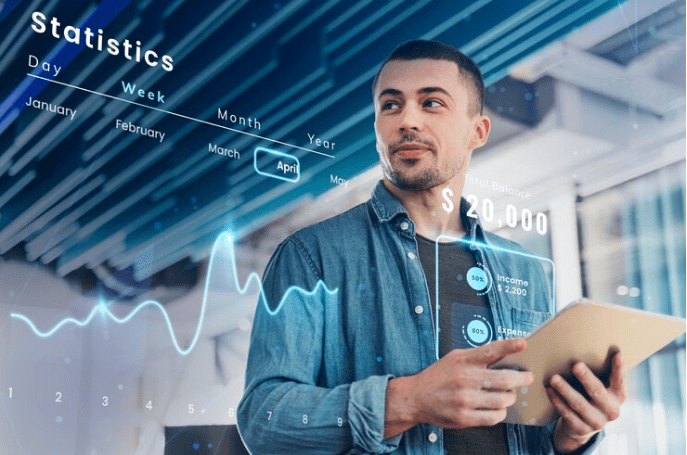Introduction:
Introducing artificial intelligence (AI) into financial operations has caused a paradigm change within the sector. AI has become a mainstay in the financial industry, with applications ranging from algorithmic trading to fraud detection and predictive analytics. This article examines how AI is transforming these three fundamental fields.
Financial Predictive Analytics:
Using AI algorithms in predictive analytics in finance enables the prediction of future consumer behaviour, market trends, and financial results. In the age of big data, conventional models frequently need help to process enormous amounts of data effectively. But by using machine learning algorithms, which can recognize patterns and make precise predictions, AI excels in this field.
1. Market Trends and Investment Strategies:
Market trends and investment strategies are identified using AI algorithms that examine historical market data, news sentiment, and macroeconomic factors. They continuously hone tactics and adjust to shifting market conditions to maximize returns for investors.
2. Risk management:
Predictive analytics powered by AI evaluate several risk characteristics, allowing financial organizations to make wise lending, investing, and portfolio management decisions. It increases stability and lessens exposure to unpredictable market volatility.
Fraud Detection and Prevention:
New types of fraud always threaten the financial industry. The ability of AI to evaluate enormous datasets and identify anomalies in real time has changed how fraud is detected.
1. Anomaly Detection:
AI systems can detect anomalies in transactional data and identify suspicious patterns that might indicate fraud. They are skilled at separating potentially fraudulent transactions from real ones.
2. Behavioral Biometrics:
AI can authenticate users using behavioural biometrics such as mouse movement patterns, keyboard dynamics, and voice recognition. This high level of security provides further defence against identity fraud and unauthorized access.
Automated Trading:
Algorithmic trading systems driven by AI carry out financial transactions at frequencies and speeds impossible for humans to match. To make split-second decisions, they use real-time data and sophisticated mathematical models.
1. Market Analysis and Strategy Implementation:
Market analysis and strategy implementation rely on AI algorithms that sift through enormous volumes of data to pinpoint the best points of entrance and departure. They execute deals precisely and react quickly to shifting market conditions.

2. Risk Management and Portfolio Optimization:
Risk management and portfolio optimization are two areas where algorithmic trading with AI places a strong emphasis. It uses strategies including stop-loss orders and dynamic portfolio rebalancing for a balanced risk-reward profile.
Issues and Moral Considerations:
Although the use of AI in banking has many advantages, there are also some difficulties. Critical considerations include ensuring transparency, preventing bias in decision-making, and defending against adversarial attacks. Regulatory organizations are currently establishing frameworks to control the moral application of AI in banking.
Conclusion:
Finance has entered a new era of efficiency, precision, and innovation due to the deployment of AI. Predictive analytics, fraud detection, and algorithmic trading are just the beginning of AI’s potential in this industry. Financial institutions must adopt new technologies responsibly as they develop, ensuring that they are used for the benefit of the sector and society.

